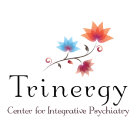Abhyanga: The Traditional Ayurvedic Massage
I was out of town recently and was excited to see Ayurvedic massage, or Abhyanga, offered at the hotel I was staying at. Unfortunately, the experience was very disappointing. The Abhyanga massage and the Shirodhara I chose, was nowhere close to the original technique and the intended benefits of an authentic service. It was sad to see what passes off as Ayurvedic massage at certain places. I am hoping that this spa is an outlier when it comes to providing authentic Abhyanga massage in the US. So, here’s a description of what this massage treatment is about; so, everyone can be informed consumers.
Abhyanga is a traditional Ayurvedic massage done by applying warm herb-infused oil to the body in rhythmic and sequential steps.
There is no greater expression of self-love than lovingly anointing oneself with warm oil—this practice is called Abyanga or Snehana. Interestingly, the Sanskrit word “Sneha” can be translated as both “oil” and “love.” So, the effect of Abhyanga is like the experience of being loved and cared for. The therapeutic aspect of being touched it is enhanced by the Abhyanga techniques, all of which have profound healing effects on the recipient. Hence, Abhyanga can give a deep feeling of stability and warmth. Which is why, in Indian culture, an oil massage is one of the many established routines for a newborn baby, starting as early as 3 to 4 weeks after birth, and continuing till they are at least 1.5 to 2 years old. Babies raised in the traditional Ayurvedic way (or for that matter, the Indian way); will start their mornings with warm herbal oil massage followed by a traditional hot bath. No wonder these babies sleep so well afterwards! Now, in the West, we are learning the benefits of giving babies a massage every day.
Abhyanga has many goals:
- Stimulation of the internal organs, especially the digestive tract – very similar to practicing certain yoga postures to stimulate internal organs and their functioning.
- Rejuvenation and relaxation of the musculo-skeletal system.
- Abhyanga involves energy work and reflexology; by stimulation of the various energy points on the surface of the body (known as Marma points), which correlate with functioning of various internal organs. Stimulation of these Marma points helps to unblock the energy channels and allows for free flow of energy through its channels in the body.
- Abhyanga by nature is a lymphatic massage. It helps to stimulate lymph and blood circulation. Which is why, after Abhyanga, it is easy for body to release toxins from all systems.
- Drug delivery system. Afterall, the skin is the largest organ of the body and a highly absorbable one. Using skin to deliver therapeutic herbs has the benefit of bypassing premature breakdown of the herb by the liver, which is what happens when herbs and medicines are ingested orally. It also allows for direct local application of the herb. When we use the warm herb infused oil in Abhyanga, oil becomes the vehicle to deliver the herbs to our internal environment. Hence, a traditional Ayurvedic doctor will customize the oils and herbs used for each client.
With these goals and benefits in mind, let’s move on to the technique…Abhyanga starts with abdominal massage because according to Ayurveda, gut is the most important part of body. If gut is healthy then a person is healthy. Belly massage with round strokes and marma stimulation will help to stimulate all digestive organs, so they can work 24×7 without any stress.
After that is an arms and legs massage with long strokes while squeezing the limbs as the hands of the masseuse move from joint to tip of fingers/toes. Along the way, gentle pressure is exerted on marma points. This technique helps to stimulate lymphatic system and drain out excess fluid and toxins from body. This is followed by hand and foot massage with stimulation of all the marma points in our hands and feet. Nerve endings are concentrated in our hands and feet as Marma points. Stimulation of the marma points in the hands and feet is a very important part of Abhyanga as we are able to positively affect the health of the various internal organs through these marma points.
Next comes the face and head massage. There are 7 marma points on face and 15 on head. Abhyanga of the face will help to rejuvenate facial skin, leave it glowing, will reduce fine lines and prevent wrinkling and other signs of aging. Abhyanga of the head, helps in many conditions like migraine, anxiety, depression, and many neurological disorders.
Finally, back abhyanga starts with stimulating all 7 chakra centers through their marma centers. This part of abhyanga is therapeutic for all kinds of back pain, herniated discs, etc.
Traditionally, this service ends with a 10-15 min herbal steam sauna to enhance sweating of the toxins that were mobilized with the massage technique.
In contrast, during my service, the masseuse applied warm sesame oil over my limbs and back. There was no abdominal work, no lymphatic massage, no work on the face, head, hands or feet. No marma stimulation at all. Later, I looked at their brochure and Marma stimulation is an add on service (on top of the $140 I already paid for the massage and Shirodhara). So, Abhyanga is just applying oil??? Needless to say, I was very disappointed.
Full disclosure: I am the owner of Trinergy Ayurveda Wellness & Spa where you are assured of an authentic, therapeutic and deeply rejuvenating Abhyanga service, provided by our traditionally and well trained Ayurevdic massage therapists; should you choose to try us out.

